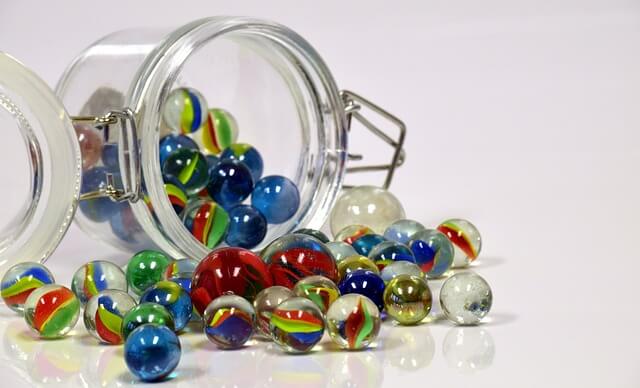Marbles is a game with a long and interesting history. Balls that look like marbles were found in ancient Egyptian tombs around 3000 BC. The ancient Romans also played Marbles & were often mentioned in Roman literature, as in Ovid‘s poem “Nux” (which mentions playing the game with walnuts).
In the 1800s and early 1900s, children liked to play this game with marbles made of glass, clay, and stone, among other things. In the 1800s, glass marbles became very popular because they were cheaper to produce than stone marbles and came in more colors and styles.
The rules of marbles have changed from place to place and culture to culture, but the basic idea is that players take turns shooting their marbles at a target, like another marble or a hole in the ground, to try to knock it out of the playing area or score points.
Some of the oldest known rules for the game come from the 1700s. They were written down in a book by Charles Cotton called “The Complete Gamester.” These rules covered the most essential parts of the game, like how to shoot the marbles, get points, and figure out who won.
Over time, different versions of the game came out, like “Ring Taw,” where players try to knock a marble out of a circle, and “Ringer,” where players try to land their marble inside a circle. In some parts of the world, like Asia, people still play games with marbles that have been around for many years.
The number of marbles a player would own and play with can vary depending on the specific rules of the game being played. However, in most traditional games of marbles, each player has a set of around 10 to 20 marbles. The exact number of marbles can vary depending on the size of the marbles and the rules of the game. For example, some games may use larger or smaller marbles, while others may require a certain number of marbles to be used in each round.
In addition, some variations of the game may involve players “winning” or “losing” marbles during the game, which can affect the total number of marbles each player has at any given time. Overall, the number of marbles a player owns and plays with is usually determined by the specific rules of the game being played.
Children and adults worldwide still like to play with marbles, and the rules continue to change and adapt to new ways of playing. There are even international tournaments for marbles, like the World Marbles Championship, which has been going on in the UK every year since 1932.
Other uses for marbles besides playing a game are marble runs and mazes, which are very popular with kids. Marble runs are usually made up of a series of tracks, chutes, and obstacles that marbles can roll down. Ramps, tunnels, and other features are often added to make the course more interesting and challenging.
Marble mazes, on the other hand, usually have a series of walls, dividers, and other obstacles that the marbles have to go around or through to get to the end. These mazes can be very simple and easy to follow, or they can be very complicated and hard to solve.
Both marble runs and mazes can help kids develop their creativity, ability to solve problems, and fine motor skills. They can also be fun and interesting for both kids and adults. There are a lot of different kinds of marble runs and mazes, from simple, cheap plastic ones to more complicated ones made of wood, metal, or other materials.

